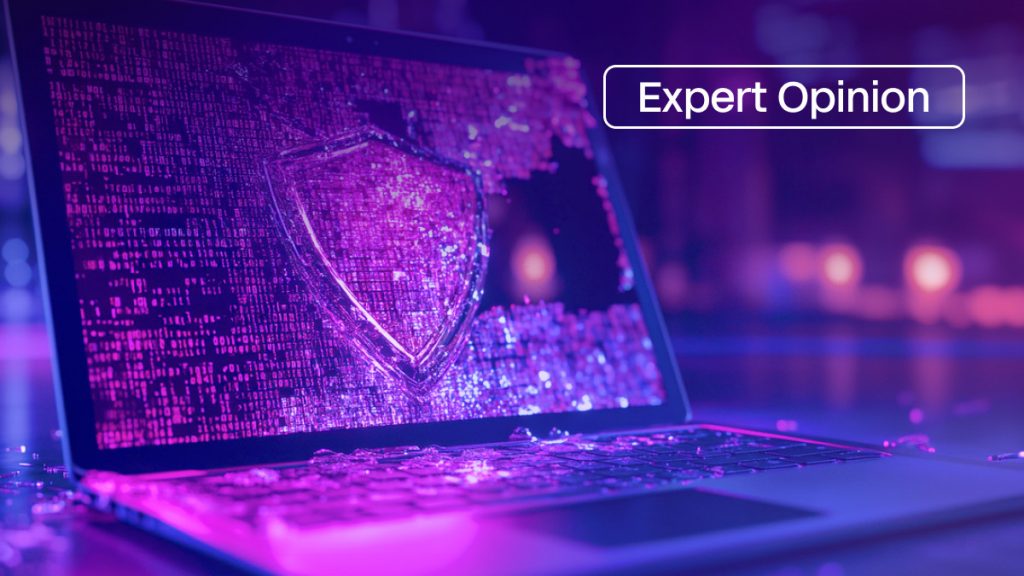It’s a Balancing Act with CTI and DTI in Modern Cyber Defense


In Brief
Organizations face relentless cyber threats, making a proactive, defend-forward approach with Cyber Threat Intelligence (CTI) and Direct Threat Intelligence (DTI) essential.

Take a look at any organization, and they’ll tell you that they have been a target of a data breach—not only government institutions and global enterprises but even small businesses are not spared. Cyber attacks come in various forms, with the most common ones being malware, phishing, DDoS, and MitM attacks, while ransomware attacks are capable of outright crippling an organization’s operational downtime.
According to the ITRC Annual Data Breach Report, over two thousand disclosed breaches occurred in 2023 alone, and there are no signs of slowing down, not discounting rising geopolitical tensions.
It spotlight an uncomfortable truth: reactive cybersecurity is no longer sufficient. It’s now necessary for us to start adopting a defend-forward mentality. To combat the unending barrage of cyber attacks, companies need to adopt a proactive approach to threat management. We should anticipate and neutralize threats before they rear their heads and escalate.
The critical components of threat intelligence can be divided into Cyber Threat Intelligence (CTI) and Direct Threat Intelligence (DTI) – distinct defenses that are equally important and, together, form a comprehensive strategy that addresses threats from all angles, both imminent and potential.
Cyber Threat Intelligence – Your Strategic Eye Mapping of the Cyber Threat Landscape
CTI refers to the systematic process of analyzing cyber threat data in a broader sense— providing organizations with actionable insights against current and emerging threats. This type of intelligence comprises learning adversary tactics, techniques, procedures, and indicators of compromise in order to gain meaningful insights that inform security decision-making.
Leveraging advanced data analytics, CTI platforms process over a billion data points through their sensor network to provide deep insights into emerging threats and trends in the threat landscape. To put it simply, CTI gives organizations a macro-view of the cybersecurity threats that they might face.
By leveraging CTI, organizations can proactively identify potential attack vectors and help incident response teams quickly identify the source of an attack. Take the Nobelium attacks between 2021 and 2024 targeting high-valued French diplomatic entities and corporations as an example. CTI programs were able to detect and subdue intrusion attempts early thanks to real-time threat intelligence feeds. Many other early material breaches like Yahoo!, Microsoft, Facebook, LinkedIn, JPMorgan, and Home Depot also served as wake-up calls for revising cybersecurity policies based on insights gained from CTI.
However, CTI has limitations when used in isolation, given its sometimes retrospective and broad nature, which is why integrating it with real-time threat data can enhance its applicability. CTI can cast a wide net in terms of the type of intelligence collected and analyzed. Much of CTI is broad and not necessarily germane to a specific organization and its profile. This can create valuable intelligence, but on the same token, it can create a lot of noise.
The conventional mindset dictates that we must conjure up actionable intelligence on every single piece of information collected and analyzed. This is a daunting and nearly impossible task that can lead to an overwhelming amount of intelligence that cannot be processed or contextualized in a timely manner. CTI can elevate operational readiness against new and evolving threats; however, augmenting this approach with DTI can change the game and create a defend-forward approach to your enterprise.
Direct Threat Intelligence – Your Tactical Shield Countering the Existential Threat
DTI is crucial for organizations in anticipating immediate and imminent threats. In comparison to CTI, which draws data from historical data breach incidents, DTI maps the entire existential threat landscape using a zero-touch, non-invasive technology that visualizes the threat by analyzing patterns and behaviors of threat actors using real-time data, providing security teams with the critical information they need to act swiftly.
DTI has the ability to see every existential threat and visualize threat actors and threat campaigns moving within striking distance and into an attack formation. DTI can also see threats as early as 8 weeks prior, which exemplifies this type of intelligence and its role in providing timely, actionable intelligence that can preemptively disrupt potential cyberattacks.
As DTI systems continuously gather and analyze data, this contextualization assists security teams to understand the nature of the threat and mitigate its potential impact. JPMorgan Chase, which is in a state of constant battle against a staggering 45 billion daily hacking attempts, has established a threat intelligence sharing platform among leading financial institutions, enabling real-time exchange of cyber threat information.
Similarly, IBM’s Zero Trust Model operates on the principle of ‘never trust, always verify’ that integrates real-time threat detection with stringent access controls, effectively reducing data breach incidents. Given the unrelenting cyberattacks, DTI is imperative for this current security setup owing to its dynamic nature, which makes it indispensable in current security setups, particularly when combined with CTI for a comprehensive threat response strategy.
CTI & DTI Combined – Your Unified Defense Preempting Imminent and Potential Threats
An integrated approach that combines the strategic breadth of CTI with the tactical immediacy of DTI creates a more robust defense mechanism. The synergy enhances detection capabilities and overall system resilience by providing a holistic view of the threat landscape paired with precise, actionable responses.
This comprehensive threat intelligence strategy is creating a paradigm shift towards a proactive cybersecurity stance, supported by the emergence and adoption of new technologies. For example, Palo Alto Networks’ AI-powered security platform is focused on improving threat detection rates to help clients solve complex and challenging cybersecurity issues – a clear indication of successful AI integration.
While it’s a no-brainer to adopt blockchain technologies as their decentralized nature supports the notion of encrypted security, 51% of attacks are attributed to an entity gaining control over a network. This shows that using a decentralized ledger to record transactions securely isn’t enough and that prioritizing cybersecurity will be crucial to protecting blockchain networks from threats.
While many organizations are shifting to platforms that support AI and blockchain technologies, they still lack the main ingredients of contextualized threat intelligence. With the advent of DTI, coupled with traditional CTI, organizations stand a fighting chance to build formidable applications and platforms that integrate these technologies in unison.
Government agencies and the private sector are investing in AI, blockchain, and cutting-edge DTI solutions to redefine their cyber security risk and approach. In order to keep pace with the adversaries, leveraging AI and DTI will be a game changer in measuring risk and protecting the enterprise and its valuable digital assets.
Cybersecurity is still evolving, and the industry is being tested daily to keep pace. Technologies like artificial intelligence, blockchain, DTI, and quantum computing provide a glimpse into the innovation and opportunities that lie ahead. AI is getting smarter every day, and with quantum computing on the horizon, it will be perfected over the next 8–10 years.
We are entering an intelligence-led paradigm where every facet will lead with this. It will drive the future and allow the industry to build platforms and process massive amounts of data at scale. We must be cognizant that our cyber adversaries are in the same game and will attempt to weaponize these technologies against the greater good. It is vital that the industry protect its investments in technology to maintain its tactical advantage and information dominance.
The Way Forward is Defend-Forward
As cyber threats continue to evolve and plague cyberspace, our strategy must also evolve. Cybersecurity is moving beyond a direct and offensive approach to dealing with threats, adopting a defend-forward approach to predict and eliminate threats before they pose a danger.
The future of cybersecurity is dynamic and robust, leveraging AI, blockchain, and quantum computing to build resilient systems. This shift in technology also reflects a shift in mindset—from reactive to proactive, from defense to offense.
More organizations employing dynamic and impenetrable cyber defenses will inadvertently present more opportunities to gain long-term insights that help in strategic planning against future threats. As we continue to innovate, it’s clear that in the battle against cyber threats, proactive intelligence is the only way forward.
Disclaimer
In line with the Trust Project guidelines, please note that the information provided on this page is not intended to be and should not be interpreted as legal, tax, investment, financial, or any other form of advice. It is important to only invest what you can afford to lose and to seek independent financial advice if you have any doubts. For further information, we suggest referring to the terms and conditions as well as the help and support pages provided by the issuer or advertiser. MetaversePost is committed to accurate, unbiased reporting, but market conditions are subject to change without notice.
About The Author
A global cybersecurity expert with over two decades of experience, Jeremy has been instrumental in advising governments, law enforcement, and private organizations across industries on cyber threat intelligence, risk management, and next-generation security. As CEO of Blackwired, he leads efforts to tackle complex cyber challenges, including high-profile ransomware cases, cryptocurrency-based investigations, and strategic cybersecurity for UHNW clients and family offices. A sought-after speaker and lecturer, Jeremy has shared his insights at institutions like Harvard and with NATO forces, making him an invaluable voice for cybersecurity and intelligence.
More articles

A global cybersecurity expert with over two decades of experience, Jeremy has been instrumental in advising governments, law enforcement, and private organizations across industries on cyber threat intelligence, risk management, and next-generation security. As CEO of Blackwired, he leads efforts to tackle complex cyber challenges, including high-profile ransomware cases, cryptocurrency-based investigations, and strategic cybersecurity for UHNW clients and family offices. A sought-after speaker and lecturer, Jeremy has shared his insights at institutions like Harvard and with NATO forces, making him an invaluable voice for cybersecurity and intelligence.

















































